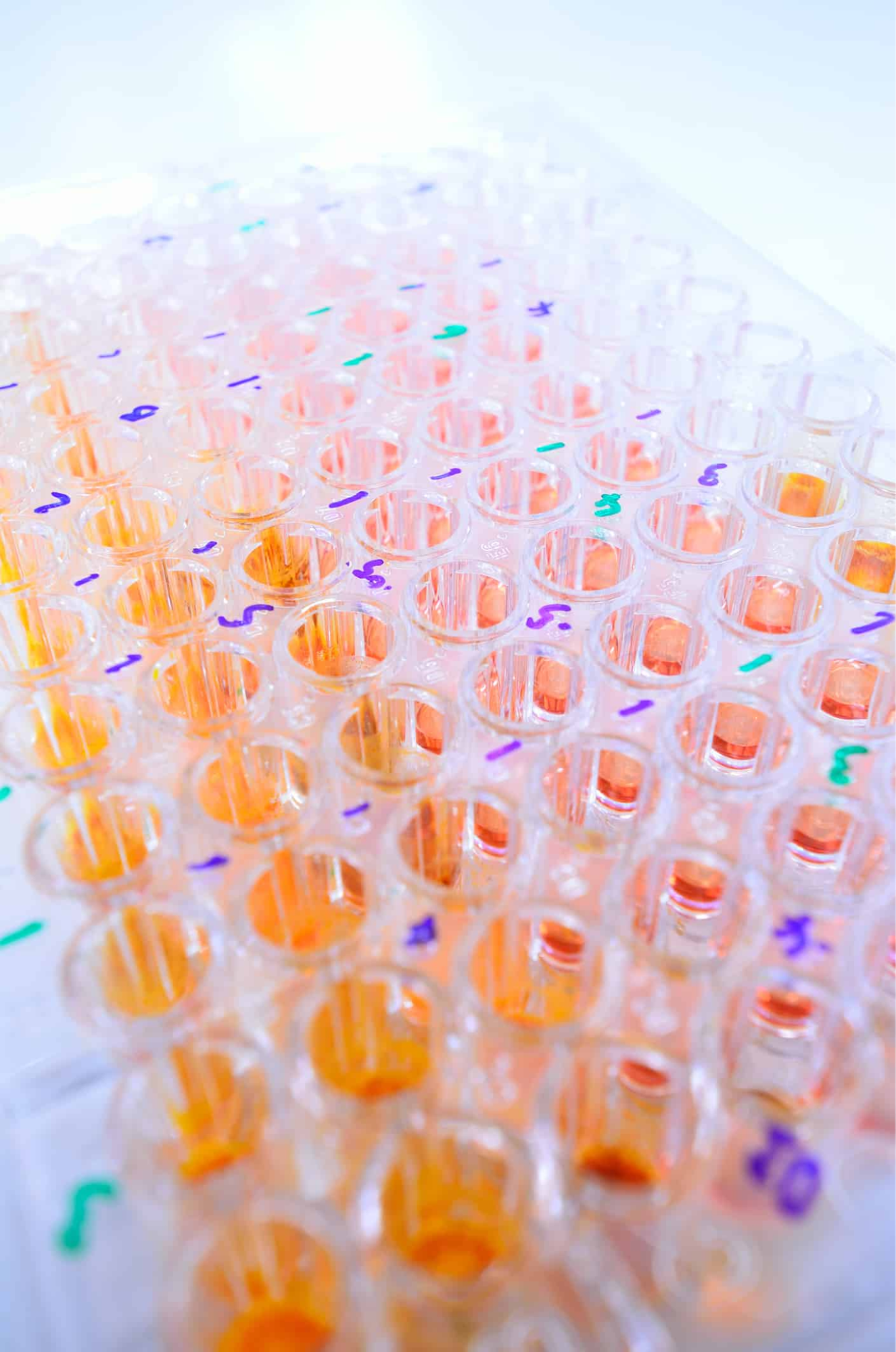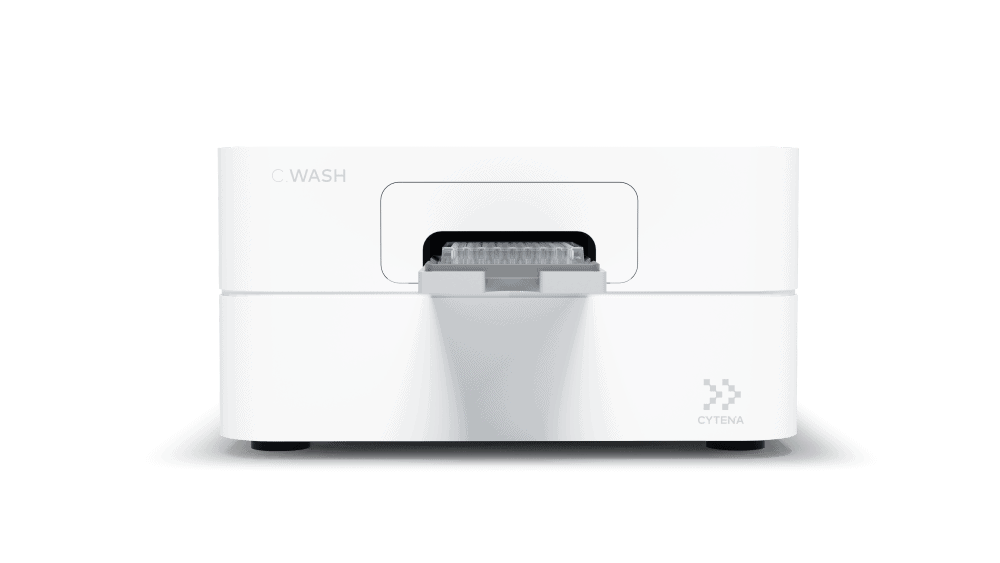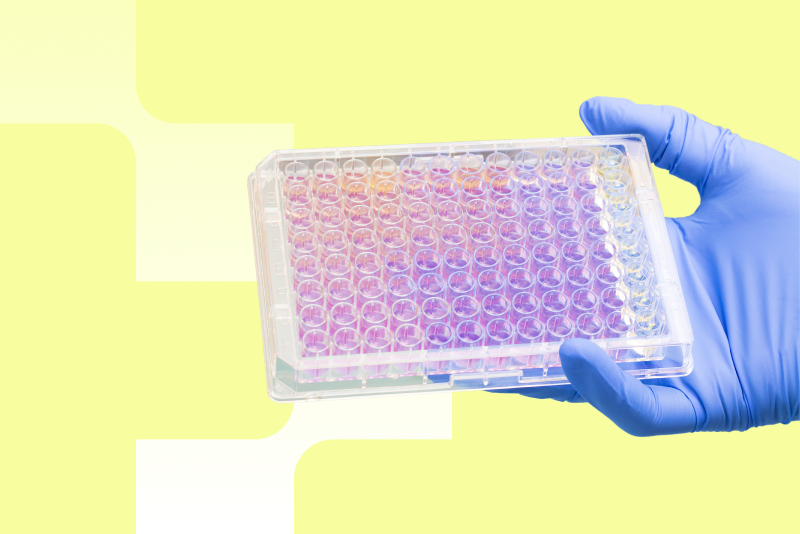BICO News Feed
- January 29, 2025
- 1:03 pm
Advances in Laboratory Automation: Streamlined ELISA and Cell-based Assays
Laboratory automation is changing how scientists conduct research and develop new therapies (Holland & Davies, 2020). By providing efficiency and accuracy at virtually all steps of core biomedical research workflows, automation allows researchers to set more ambitious goals and generate more profound insights into cellular behavior and drug activity. Plate washing is an essential component of important research techniques, including enzyme-linked immunosorbent assays (ELISAs) and cell-based assays. Automated plate washing is more efficient and accurate than manual pipetting methods and gives researchers greater control and confidence in their results. This article explores the importance of automation for ELISA and cell-based assays, highlighting the benefits of automated plate washing for achieving more efficient and consistent workflows.
ELISA
ELISAs are an indispensable technique for detecting and quantifying specific antigens in clinical and research settings. Common ELISA formats, including direct, indirect, sandwich, and competitive ELISAs, use antigen-antibody binding to achieve incredible specificity (Alhajj et al., 2024).
ELISA Applications
ELISAs have a vast range of applications across research and clinical settings, where they are crucial for the diagnosis of infectious diseases (Alhajj et al., 2024; Iha et al., 2019). They also play central roles in immunology and oncology research, enabling the precise measurement of cytokines and chemokines (Stefura et al., 2019). Beyond these domains, ELISAs help ensure quality during drug development, maintain food safety, assist forensic analyses, and enable environmental monitoring (Alhajj et al., 2024; Wadhwa et al., 2015) (Fig. 1).

Emerging Technologies and Challenges
Technological advances have significantly expanded ELISA applications. Microfluidic platforms, for instance, reduce reagent consumption and speed up workflows, making rapid point-of-care testing more feasible (Kweon et al., 2024). CRISPR-ELISA further boosts sensitivity by leveraging Cas enzymes and guide RNAs to amplify the detection signal (Li et al., 2022). Despite their strengths, ELISA workflows can be hampered by manual pipetting errors and reagent costs. Automated ELISA workflows mitigate these issues, enhancing reliability and throughput. As ELISA technologies advance, automation and novel detection strategies promise even more efficient and precise workflows.
Industrial Innovations
Industries are increasingly using microbes for sustainable and efficient solutions. Microbial fuel cells are used to provide clean energy, while cosmetics use microbes to provide anti-aging and UV protection (Gupta et al., 2019; Naha et al., 2023). In the food and drinks industry, microbes drive fermentation and preservation processes and even serve as innovative food sources (Graham & Ledesma-Amaro, 2023). Additionally, eco-friendly alternatives in leather production and mining showcase the versatility of microbial applications (Rawlings, 2002; Ugbede et al., 2023).
Cell-Based Assays
Cell-based assays are used to investigate cell behavior, gene function, and drug activity across diverse research fields. These assays underpin key applications such as high-throughput screening for drug discovery, functional genomics, and toxicology, enabling scientists to evaluate thousands of compounds or genetic variants quickly and reliably (Nierode et al., 2016). New approaches like high-content screening, single-cell analysis, microfluidics, and organ-on-chip platforms are expanding the insights generated from these assays (Ingber, 2022; Nierode et al., 2016; Sagar et al., 2018).
Challenges in Cell-based Assays
Challenges in cell-based assays revolve around manual pipetting, cross-contamination, cell detachment, and background noise. Pipetting errors can lead to inconsistent reagent delivery and experimental conditions, skewing results. Improper washing may stress or detach cells, resulting in reduced cell viability and unreliable data. Inadequate reagent removal can contribute to elevated background signals that mask true readouts. Additionally, high-throughput experiments using manual pipetting increase the risk of mixing multiple compounds or conditions, confounding results and forcing researchers to repeat assays and repurchase expensive reagents.
Emerging Technologies
Emerging cell-based assay techniques, such as high-content screening, single-cell analysis, microfluidics, and organ-on-chip, offer unprecedented insights into cellular behavior and function. High-content screening integrates imaging and data analysis to capture multifaceted phenotypes within a single experiment (Nierode et al., 2016). Single-cell analysis uncovers rare subpopulations that might otherwise be lost in bulk measurements (Sagar et al., 2018). Microfluidic systems reduce reagent use and enable precise control over culture conditions (Duncombe et al., 2015). Organ-on-chip devices mimic human organ physiology, providing better models for drug discovery, disease research, and regenerative medicine (Ingber, 2022). Automated cell-based assays offer enhanced throughput and improved reproducibility and are set to play an important role in facilitating the implementation of new technologies.
Automated Plate Washing
Plate washing is a critical yet frequently undervalued aspect of many laboratory workflows. Effective washing removes unbound reagents and clears away contaminants, minimizing background noise that can interfere with data interpretation. By ensuring uniform test conditions, proper washing reduces the likelihood of cross-contamination and yields more reliable, reproducible results. This consistency is vital for techniques like ELISA and cell-based assays that demand precise reagent exposure control and incubation times. Inadequate washing can compromise experiments, wasting both time and costly reagents.
The C.WASH PLUS from CYENA
The C.WASH PLUS exemplifies cutting-edge automation in plate washing, streamlining workflows, and reducing common errors associated with manual methods. Compatible with 96-, 384-, and 1536-well plate formats, it adapts easily to various assay requirements and pre-established protocols. By using a centrifugal washing mechanism, the C.WASH PLUS keeps residual volumes as low as 0.1 μL after two 1-minute cycles, significantly minimizing reagent carryover. This increases accuracy, allowing assays to produce more reliable results. The system is easily programmable, allowing researchers to optimize and automate washing steps for different applications (Fig. 2).

Conclusion
Laboratory automation transforms ELISAs and cell-based assays, reducing variability and minimizing resource consumption. By optimizing processes like plate washing, automation ensures higher throughput, greater data reliability, and consistent execution of complex protocols. These advances expedite drug discovery and foster innovation in biomedical research. As technologies like single-cell analysis, microfluidics, and organ-on-chip mature, integrating automation becomes more critical. Ultimately, embracing automated solutions will empower scientists to uncover novel targets, refine therapeutics, and advance the frontiers of biomedicine.
Contact the CYTENA team today to explore automated laboratory solutions, including the groundbreaking C.WASH PLUS, and see how it can speed up your workflows while improving accuracy.
References
Alhajj, M., Zubair, M., & Farhana, A. (2024). Enzyme Linked Immunosorbent Assay. In StatPearls. StatPearls Publishing.
Duncombe, T. A., Tentori, A. M., & Herr, A. E. (2015). Microfluidics: Reframing biological enquiry. Nature Reviews. Molecular Cell Biology, 16(9), 554–567.
Holland, I., & Davies, J. A. (2020). Automation in the Life Science Research Laboratory. Front Bioeng Biotechnol, 8(571777).
Iha, K., Inada, M., Kawada, N., Nakaishi, K., Watabe, S., Tan, Y. H., Shen, C., Ke, L.-Y., Yoshimura, T., & Ito, E. (2019). Ultrasensitive ELISA Developed for Diagnosis. Diagnostics, 9(3), 78.
Ingber, D. E. (2022). Human organs-on-chips for disease modelling, drug development and personalized medicine. Nature Reviews Genetics, 23(8), 467–491.
Kweon, O. J., Yoon, S., Choe, K. W., Kim, H., Lim, Y. K., & Lee, M.-K. (2024). Performance evaluation of microfluidic microplate-based fluorescent ELISA for qualitative detection of SARS-CoV-2–specific IgG and IgM. Scientific Reports, 14(1), 18200.
Li, N., Chinthalapally, M., Holden, V. K., Deepak, J., Dhilipkannah, P., Fan, J. M., Todd, N. W., & Jiang, F. (2022). Profiling Plasma Cytokines by A CRISPR-ELISA Assay for Early Detection of Lung Cancer. Journal of Clinical Medicine, 11(23), 6923.
Nierode, G., Kwon, P. S., Dordick, J. S., & Kwon, S.-J. (2016). Cell-Based Assay Design for High-Content Screening of Drug Candidates. Journal of Microbiology and Biotechnology, 26(2), 213–225.
Sagar, Herman, J. S., Pospisilik, J. A., & Grün, D. (2018). High-Throughput Single-Cell RNA Sequencing and Data Analysis. In T. Vavouri & M. A. Peinado (Eds.), CpG Islands (Vol. 1766, pp. 257–283). Springer New York.
Stefura, W. P., Graham, C., Lotoski, L., & HayGlass, K. T. (2019). Improved Methods for Quantifying Human Chemokine and Cytokine Biomarker Responses: Ultrasensitive ELISA and Meso Scale Electrochemiluminescence Assays. In P. Lympany & M. G. Jones (Eds.), Allergy (Vol. 2020, pp. 91–114). Springer New York.
Wadhwa, M., Knezevic, I., Kang, H.-N., & Thorpe, R. (2015). Immunogenicity assessment of biotherapeutic products: An overview of assays and their utility. Biologicals, 43(5), 298–306.
More news
Stay updated
Get the latest first.



